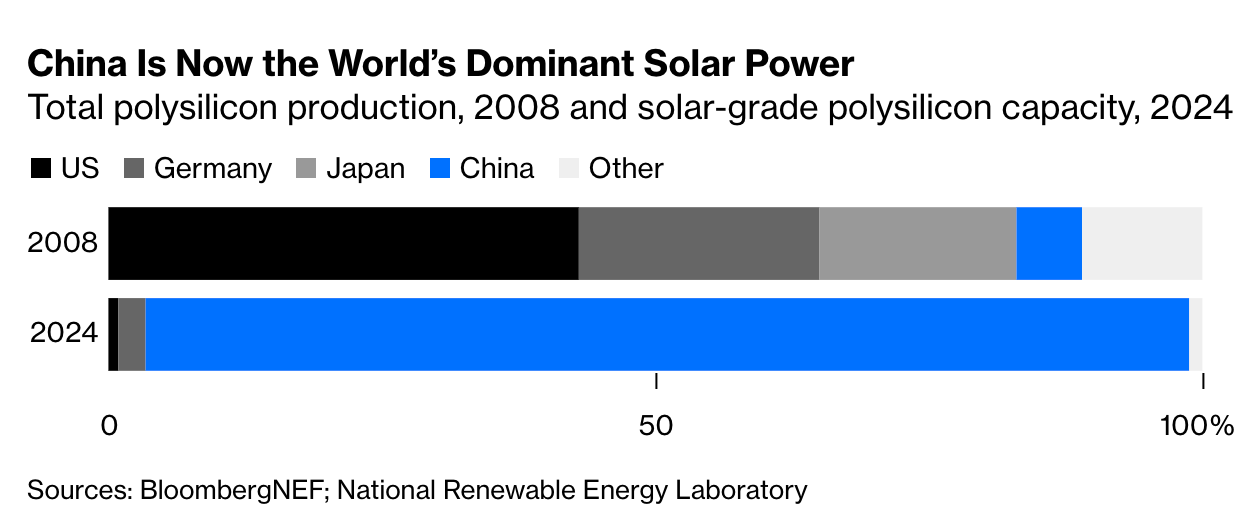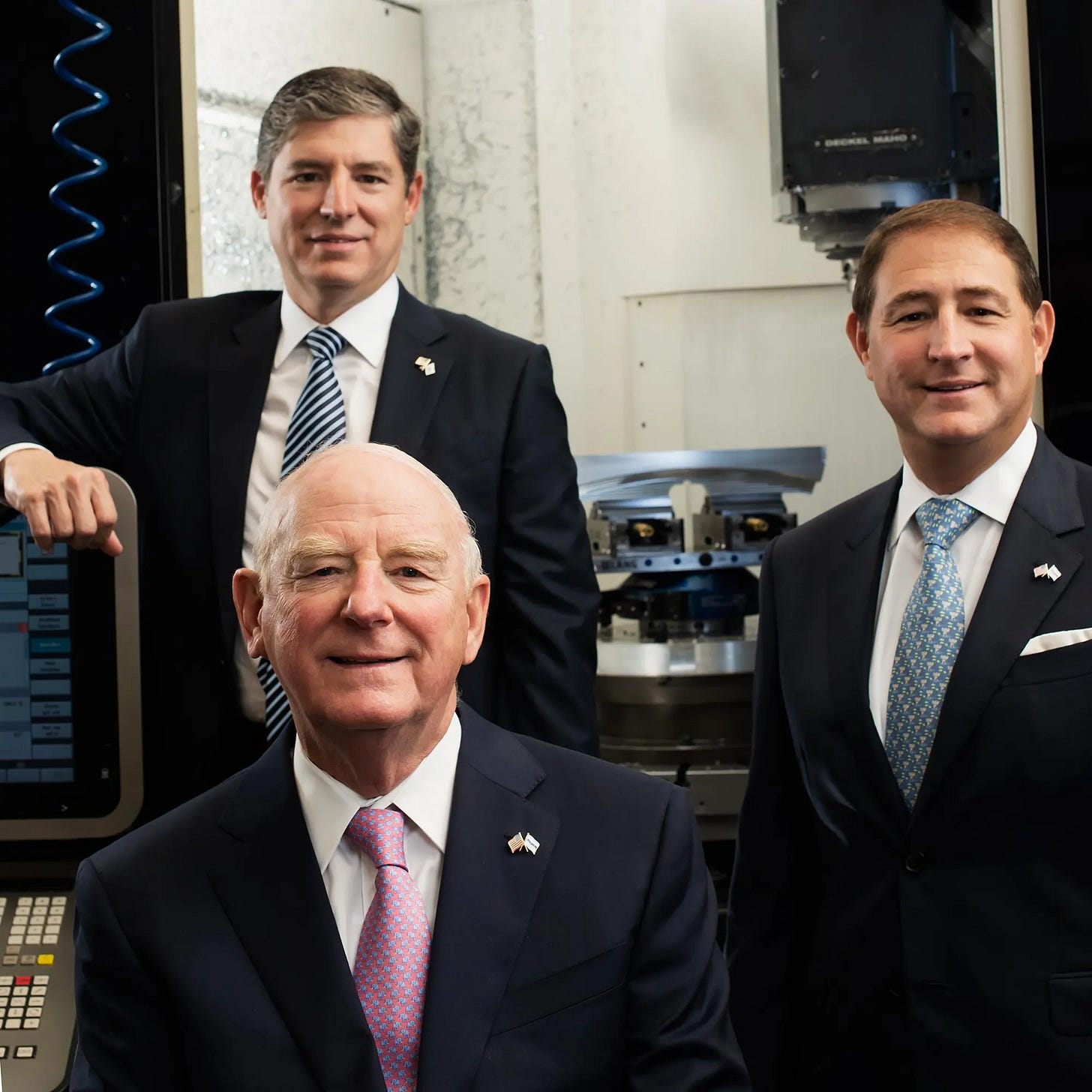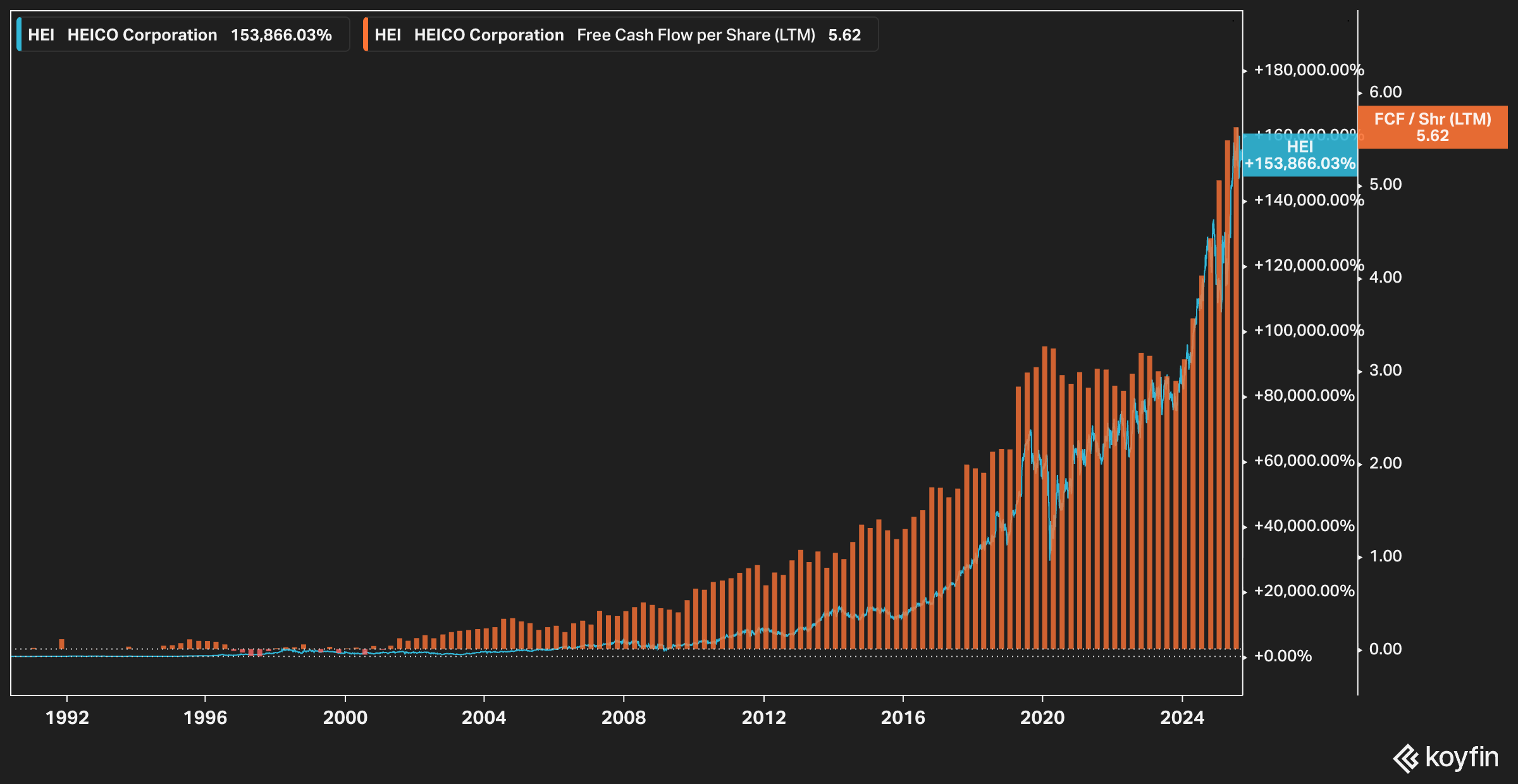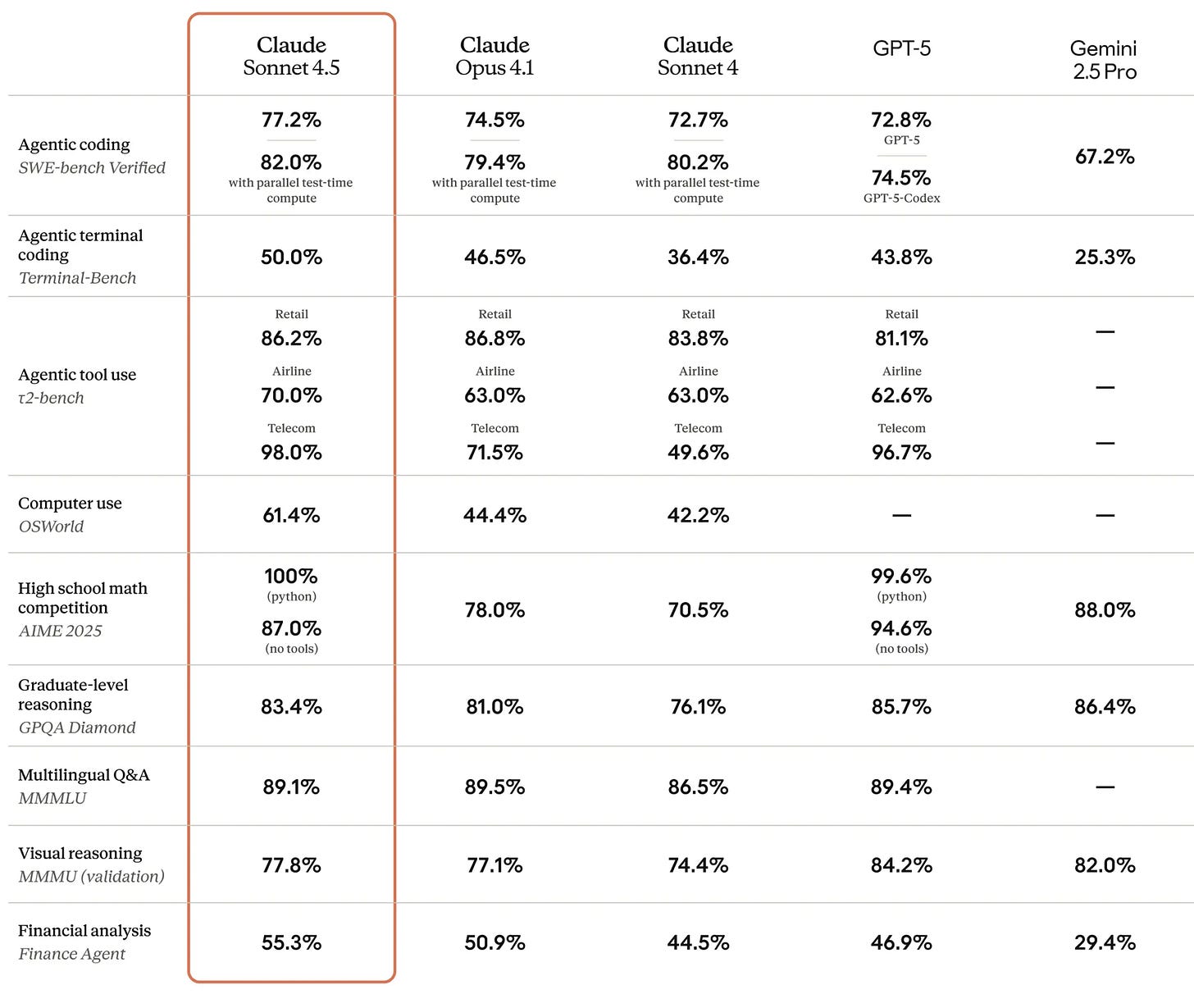593: Jensen's Reality Distortion Field, OpenAI + Commerce, China's Solar Monopoly, RIP HEICO's Laurans Mendelson, TikTok, Sora 2, Sonnet 4.5, and CraftGPT
"a feedback loop that co-produces ideas"
If you want truly to understand something, try to change it.
—Kurt Lewin
💡🎨🧩🤔 You’re not a passive receiver waiting for inspiration to arrive. You and your surroundings run a feedback loop that co-produces ideas.
The desk, the lighting, the soundtrack (or silence), the people you talk to, how you move your body or stay still, what you did earlier in the day (filed your taxes or improvised on the guitar?), the tools you use, the moods you’re in… All that stuff shapes the field on which you’re trying to plant seeds 🌱🌾
The good news is you have levers to pull. Tweak inputs, run small experiments, and notice the outputs. Curate the environment and the rhythm. Shape the conditions for your own creativity.
Creativity is a loop you can tune 🔁
Here’s the part most people miss: friction is a crucial signal.
We often view irritation, resistance, and tension as problems. Issues to fix. But they often indicate that you’ve reached the edge of your current model.
Instead of retreating from discomfort, examine it.
The greatest breakthroughs often arise from this, solving problems and pursuing curiosities that others either dismiss as insignificant or actively run away from. Cultivate a curiosity for these ‘unimportant’ anomalies and you increase your odds of stumbling on some great stuff.
🎸📦📭 Three months after placing the order, my electric guitar should arrive later this week. I’m very excited!
🛀💭🇸🇪🫎🎧 Daniel Ek will leave the CEO role and become chairman of Spotify. He will be replaced by co-CEOs Gustav Söderström and Alex Norström.
The first thing that came to mind is, what will he do next?
As I wrote about before, he’s chairman and a big investor in Helsing. Some reports suggest his involvement is at a ‘near-daily operational level.’ With the huge reset moment for defensetech, especially in Europe, I wonder if he’ll get more involved there 🤔
🔎📫💚 🥃 Exploration-as-a-service: your next favorite thing is out there, you just haven’t found it yet 👇
🏦 💰 Business & Investing 💳 💴
😎🔮😵💫 Jensen’s Reality Distortion Field is Strong 🏗️🤖🚀📈
Steve Jobs was famously said to have a “reality distortion field”.
He had the charisma to convince himself and others that nearly impossible goals were not only desirable and achievable, but *inevitable*, bending people’s perception of what was realistic through sheer force of will and persuasion.
Some people saw this Jedi mind trick as a bad thing, and sometimes it was, but at other times it was actually what made it possible to accomplish the things that seemed impossible.
Everything starts with a vision, a goal, a direction, an objective, and then the willpower and grit to get it done.
Without it, you don’t get there.
So having this talent is incredibly valuable, even if it sometimes gets you to drive over the cliff.
The closest thing to it that I can think of right now is Jensen’s ability to provide a vision of the future that would sound like a science-fiction fantasy coming from almost anyone else, but from him it sounds very plausible.
The interview above is a good example of this.
Here are some highlights (but the reality distortion field doesn’t work as well with just text, so I recommend that you listen).
The multi-trillion opportunity in augmenting human intelligence:
Jensen: The simple way of thinking about that is where motors replaced labor and physical activity, we now have AI.
These AI supercomputers, these AI factories that I talk about, they’re going to generate tokens to augment human intelligence. And human intelligence represents what, 55 to 65% of the world’s GDP. Let’s call it $50 trillion. And that $50 trillion is going to get augmented by something.
So let’s come back to a single person. Suppose I were to hire a $100,000 employee and I augmented that $100,000 employee with a $10,000 AI. And that $10,000 AI as a result made that $100,000 employee twice as productive, three times more productive. Would I do it? In a heartbeat. I’m doing it across every single person in our company right now. Every single software engineer, every single chip designer in our company already has AIs working with them. 100% coverage.
As a result, the number of chips we’re building are better. The pace at which we’re doing it is accelerating. And so we’re growing faster as a company. As a result, we’re hiring more people. Our productivity is greater. Our top line’s greater. Our profitability is greater. What’s not to love about that? Now apply the Nvidia story to the world’s GDP.
So what’s likely to happen is that that $50 trillion is augmented by, let’s pick a number, $10 trillion. That $10 trillion needs to run on [AI infrastructure].
First, on the economics of performance per watt and why “free” may sometimes not be cheap enough:
Jensen: There’s two ways to think about it. One way is, let’s just think about it from a perspective of revenues.
So everybody’s power limited and let’s say you were able to secure two more gigawatts of power. Well, that two gigawatts of power you would like to have translate to revenues. So if your performance or tokens per watt was twice as high as somebody else’s token per watt because you did deep and extreme co-design, and my performance was much higher per unit energy, then my customer can produce twice as much revenues from their data center. And who doesn’t want twice as much revenues?
And if somebody gave them a 15% discount, you know, the difference between our gross margins, which is around 75 points, and somebody else’s gross margins, call it 50 to 65 points, is not so much as to make up for the 30 times difference between Blackwell and Hopper.
Hopper is an amazing chip, an amazing system. Let’s pretend somebody else’s ASIC is Hopper. Blackwell’s 30 times faster. So you’ve got to give up 30x revenues in that one gigawatt. It’s too much to give up. So even if they gave it to you for free, you only have 2 gigawatts to work with. Your opportunity cost is so insanely high. You would always choose the best performance per watt.
On AI as job creator rather than destroyer:
Jensen: The concept that AI comes along and therefore there’s going to be a mass destruction of jobs starts with the premise that we have no more ideas. It starts with the premise we have nothing left to do.
Everything we’re doing in our lives today, this is the end.
And if somebody else were to do that one task for me, I have one task left. Now I have to sit there and wait for something. Wait for retirement, sit on my rocking chair. That idea doesn’t make sense to me.
And so I think that intelligence is not a zero sum game. The more intelligent people I’m surrounded by, the more geniuses I’m surrounded by, surprisingly, the more ideas I have, the more problems I imagine that we can go solve, the more work we create, the more jobs we create.
There’s a lot more, including his rationale for their partnership with OpenAI, how he thinks about China, and how ASICs aren’t really competing with the whole system that Nvidia is building.
There’s also a good riff about “extreme co-design”, their strategy of refreshing the entire stack annually (GPU, networking, CPU, interconnects, memory, software), which makes it very hard for the competition to keep up when they focus on just one or two slices of the cake 🍰
🛒🤖💳 OpenAI Bets on Agentic Commerce
The ads haven’t come (yet?), for now it’ll be affiliate commerce:
U.S. ChatGPT users can now buy directly from U.S. Etsy sellers right in chat, with over a million Shopify merchants… coming soon. Today, Instant Checkout supports single-item purchases. Next, we’ll add multi-item carts and expand merchants and regions.
We’re also open-sourcing the technology that powers Instant Checkout, the Agentic Commerce Protocol, so that more merchants and developers can begin building their integrations.
They’re partnering with Stripe, Etsy, and Shopify, which gives them a pretty long tail of merchants. If they can get Amazon and Walmart in on this, they’ll cover a lot of what people buy… But will the retail giants want to partner up?
They claim that this won’t affect what the AI recommends to users:
Merchants pay a small fee on completed purchases, but the service is free for users, doesn’t affect their prices, and doesn’t influence ChatGPT’s product results.
Instant Checkout items are not preferred in product results. When ranking multiple merchants that sell the same product, ChatGPT considers factors like availability, price, quality, whether a merchant is the primary seller, and whether Instant Checkout is enabled, to optimize the user experience.
I wish they’d make it explicit that the affiliate/checkout system is a completely separate module from the LLM that generates answer tokens, and that it can’t steer model outputs. That precedent would be healthy and build trust.
🇨🇳🔌☀️ China’s Monopoly on Solar
I think we’ve all heard it, but seeing the numbers drives the point home:
We’ve been hearing about this for years, so it may seem like it was always so, but look at the 2008 split. The shift is relatively recent. It wasn’t so long ago that China was a small player in the industry.
For more of the backstory on how this happened, check out this longer piece from last year.
🪦 🛩️ RIP: Laurans A. Mendelson, HEICO Chairman & Re-Founder 🛰️
One of the greats has passed away.
Technically, Laurans Mendelson wasn’t HEICO’s founder, but you could say that he and his sons effectively re-founded the company in 1990 when they took control.
They turned what was then a “small, troubled aviation products company” with $26 million in net revenues and about the same in market cap into what is today a nearly $40bn diversified aerospace and electronics conglomerate. The decentralized units were mostly acquired through M&A, but a lot of it also grew organically through impressive execution (the PMA business is a crown jewel).
From 1990 to today, free cash flow went from around 1 cent per share to $5.62/share in the last year:
Over Mendelson’s tenure, the stock compounded at roughly 23% CAGR (and over the past 10 years, it has a CAGR of 29.5%, showing how they perfected the model over time).
[Laurans] felt most proud of the financial security created by HEICO and its Team Members for their families.A few years ago, it was reported that over 400 HEICO employees had more than $1 million in stock in their 401(k) retirement accounts, helped by the company policy of partially matching contributions with stock. Since then, the stock has done well, so that number is likely significantly higher today.
Laurans said: “The stock has turned a lot of ordinary Heiconians, especially early staffers, into millionaires. No, that’s incorrect, multimillionaires. […] One of the basic philosophies we had to make sure is our employees, we call them team members, are owners too. It makes me very happy to know that these people who have worked so hard and done good things and made millions for shareholders are making millions for themselves.”
⌛ TikTok’s Giveaway/Take-Under 💸
Looks like it’s finally happening:
President Donald Trump on Thursday signed an executive order approving a proposal that would keep TikTok alive in the U.S. in a transaction that Vice President JD Vance said values the business at $14 billion.
Oracle, Silver Lake, and Abu Dhabi’s MGX would own a combined 45%. Current ByteDance investors like General Atlantic, Susquehanna, and Sequoia are expected to roll equity.
The remaining ~35% would be distributed among other investors (I’ve seen A16Z mentioned).
ByteDance would retain 19.9% ownership.
The most shocking part is the reported $14bn valuation, effectively a take-under. That’s roughly 1x sales for a business that has been competing pretty effectively head-to-head with Instagram and YouTube Shorts. While monetization lags, that can certainly be optimized, and there’s no reason why, at that scale, it couldn’t generate multiple billions in earnings.
Even Snap, in its pitiful state, is trading at 2.5x sales. Meta is a hair above 10x sales. (I’m not saying they’re directly comparable, but it provides context)
The more charitable take on this is that TikTok’s US operations were going to be worthless if the law went into effect, so $14bn is better than nothing.
But clearly, there was no appetite from politicians to enforce the law or face the backlash of taking TikTok away from half the country (as of recently, 170 to 183 million Americans are monthly active users on TikTok 😮).
The more cynical take: this is a giveaway to politically connected players who are implicitly expected to provide a quid pro quo for the billions in value they’re getting. This could include using the TikTok algo itself to favor certain politicians, or more donations to PACs and such. We’ll see ¯\_(ツ)_/¯
🧪🔬 Science & Technology 🧬 🔭
⛏️ CraftGPT: An AI Built “Physically” Inside Minecraft 🤖
Ok, this is sincerely one of the most mindblowing things I’ve seen lately.
I don’t even know how they got such a complex system to work when one misplaced block could cause it to fail, and how they kept track of what needed to be where to encode with blocks the model weights 🤯
It’s also a testament to the resilience and flexibility of the Minecraft game engine that it could handle all this without crashing.
I have no idea how long this project took, but let’s just say that this person’s previous YouTube video was 3 years ago…
Here are the details:
I built a small language model in Minecraft using no command blocks or datapacks!
The model has 5,087,280 parameters, trained in Python on the TinyChat dataset of basic English conversations. It has an embedding dimension of 240, vocabulary of 1920 tokens, and consists of 6 layers. The context window size is 64 tokens, which is enough for (very) short conversations. Most weights were quantized to 8 bits, although the embedding and LayerNorm weights are stored at 18 and 24 bits respectively. The quantized weights are linked below; they are split into hundreds of files corresponding to the separate sections of ROM in the build.
The build occupies a volume of 1020x260x1656 blocks. Due to its immense size, the Distant Horizons mod was used to capture footage of the whole build; this results in distant redstone components looking strange as they are being rendered at a lower level of detail.
It can produce a response in about 2 hours when the tick rate is increased using MCHPRS (Minecraft High Performance Redstone Server) to about 40,000x speed.
🤯
🧑💻 Anthropic Releases Sonnet 4.5 🧠
Anthropic has been pretty locked-in, lately. Opus 4.1 was very strong and seemed popular with real-world users doing complex coding/tool usage, though it was slow and expensive.
Less than two months later, Sonnet 4.5 is out, and at least on the benchmarks, it does better than Opus while being faster and cheaper (see above 👆).
To showcase its tool use and coding abilities, Anthropic asked every version of Claude to try to replicate the chatbot interface that they use on the website. The results are pretty impressive (especially the replication of the artifact feature):
That’s not all, they also claim the model worked autonomously for 30 hours to build a clone of Slack/Teams, writing 11,000 lines of code. Now, I don’t know how well that app worked or how clean that code was, but it’s still an improvement over past models.
Anthropic is clearly doubling down on its coding/agentic niche. Other than claiming this model is also “more aligned”, they haven’t really improved the front-end of the product, which is too bad. I wish they wouldn’t focus entirely on their API business and would still try to at least have feature parity with ChatGPT by adding things like a better voice mode, image generation, and a better UX overall to their app/website.
It almost feels like they are so inference-constrained that they *don’t* want more chatbot users 🤔
🤖🎥 🦢 OpenAI Launches Sora 2
I watched the livestream of the announcement, and based on what I saw, I’m very impressed with the model.
It seems to be doing things that I haven’t seen Google Veo 3 being able to do. But I remain skeptical until the model has been more thoroughly tested by real users.
To give an idea of the progress, check out the output from the same prompts on Sora 1 vs 2 (the gymnast one is particularly funny, Sora 1 has a crazy hallucination 🤸♀️).
What I find surprising is that, in theory, Google should have an almost insurmountable advantage for video generation because of YouTube. Yet Sora 2 seems better on multiple fronts.
Are others keeping up because they’re scraping YouTube (which is a feat in itself, it’s a lot of data!) or because they’re making up for it by being clever in other ways and wringing more out of the training data that they do have 🤔
I just got an invite code this morning. Will report back when I’ve had a chance to play with it.
🎨 🎭 The Arts & History 👩🎨 🎥
📸 Self-portrait by SSgt Alexander Cook, from Luke Air Force Base
Whenever I see a great shot of a plane in action, I can’t help but think about who took it.
In this world of computer-generated special effects and now generative AI, we forget what it takes to put a camera in the right spot at the right moment and get that special shot.










"They claim that this won’t affect what the AI recommends to users".
I'm not on Twitter, so don't want to be caustic, but I struggle to believe that this will be different to any other time in history. It's just Munger incentives.